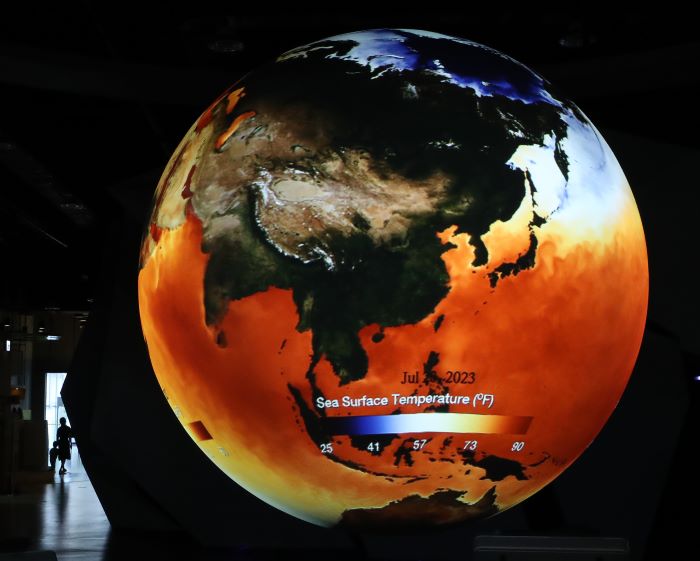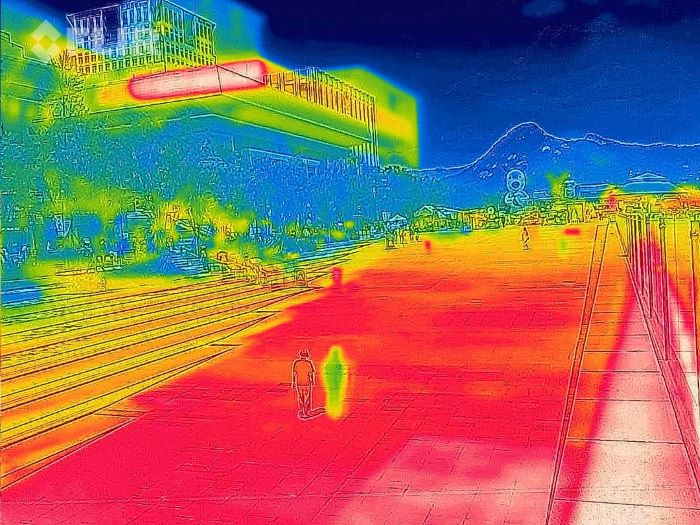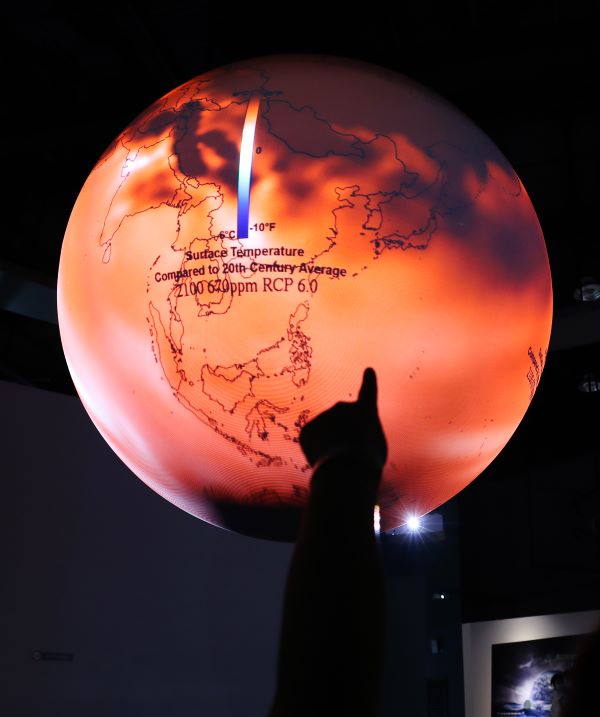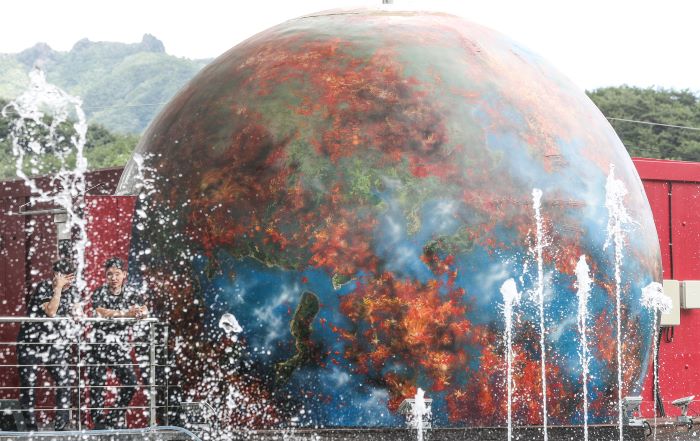
On July 30, amidst a special heat wave declaration in most parts of the country, visitors at the Daegu National Science Museum explore an indoor exhibition featuring the SOS system, representing the El Niño phenomenon during the ongoing climate crisis.
SEOUL, July 30 (Korea Bizwire) —Asia faces an increasingly dire future unless immediate action is taken to address the looming threat of climate disasters, warns a recent analysis. Over the past three decades, Asia has experienced a significantly faster rate of warming compared to the rest of the world, with temperatures rising at a staggering pace of more than 0.4 degrees per decade. This alarming trend is expected to lead to a surge in climate-related disasters, intensifying the sense of urgency in the region.

Captured by a thermal imaging camera, this image displays individuals strolling through Gwanghwamun Square in Seoul, South Korea, on the afternoon of July 30, amidst a heat warning in effect for Seoul, Gyeonggi Province, and other central regions. The visualization portrays higher temperatures in vibrant red hues, while lower temperatures appear in cool blue shades.
The year 2022 served as a stark reminder of the growing impacts of climate change in Asia, witnessing a surge in extreme weather events and their devastating consequences. Recurrent droughts and floods wreaked havoc on communities, causing loss of lives and homes. Adding to the concern, the World Meteorological Organization’s State of the Climate in Asia 2022 report emphasized that the threat of melting ice, glaciers, and rising sea levels poses further socio-economic disruptions in the near future.

On a scorching Sunday afternoon, amidst a heat warning in effect for Seoul, Gyeonggi, and other central regions, a thermal imaging camera captured a vibrant scene of people enjoying themselves in a fountain at the bottom of Gwanghwamun Square in Seoul, South Korea. In the image, the fountain’s refreshing blue color stands in stark contrast against the surrounding heat. Higher temperatures are vividly depicted in fiery red hues, while cooler temperatures appear soothingly in serene blue tones.
Highlighting the severity of the situation, the report revealed that Asia’s average temperature in 2022 ranked as the second or third warmest on record. The region experienced an average temperature about 0.72°C above the 1991-2020 average and a concerning 1.68°C above the 1961-1990 average, based on the WMO reference period.

On July 30, amidst a special heat wave declaration in most parts of the country, visitors at the Daegu National Science Museum explore an indoor exhibition featuring the SOS system, representing the El Niño phenomenon during the ongoing climate crisis.
Of particular concern is the fact that Asia’s warming trend from 1991 to 2022 was nearly double that of the preceding 1961-1990 period, according to the WMO’s State of the Climate in Asia 2022 report. The situation demands immediate attention and concerted efforts to reverse this disturbing trend.
The devastating consequences of climate change manifested in 2022 with 81 weather, climate, and water-related disasters striking Asia. Floods and storms accounted for over 83% of these incidents, claiming the lives of more than 50,000 people and directly affecting over 50 million individuals.
Considering Asia’s vast geographical reach, extending even to the Arctic, it is crucial for the region to come together to address this global crisis effectively. Urgent action is imperative to mitigate the impacts of climate change and safeguard the well-being of communities across Asia and beyond.
Image Credit: Yonhap / photonews@koreabizwire.com








